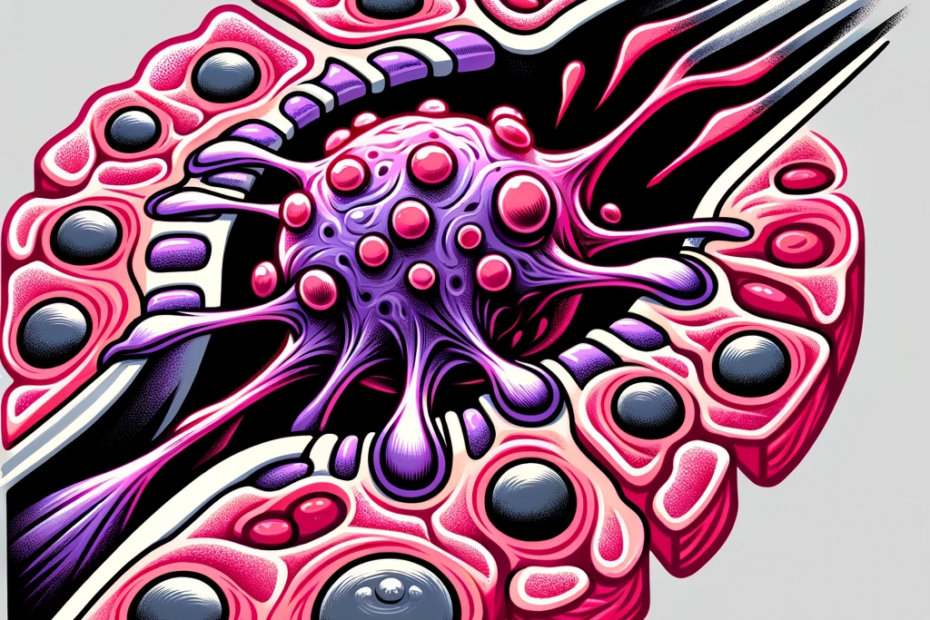Cancer is a formidable adversary, with its progression characterized by intricate processes initiated by genetic mutations and influenced by the surrounding microenvironment. In this blog post, we’ll delve into the fascinating world of cancer biology, focusing on the critical mechanisms that drive the transformation of normal cells into cancerous ones.
Hallmarks of Cancer
Cancer progression is marked by several key hallmarks, each playing a crucial role in the development and spread of cancer. These hallmarks include:
- Self-sufficiency in growth signaling
- Insensitivity to anti-growth signals
- Evading apoptosis (programmed cell death)
- Unlimited replicative potential
- Sustained angiogenesis (formation of new blood vessels)
- Tissue invasion and metastasis (spread to distant organs)
- Deregulated cellular energetics
- Mechanisms for immune evasion
Let’s explore these hallmarks one by one:
1. Self-Sufficiency in Growth Signaling
Normal cells rely on external signals from their environment to grow and proliferate. In contrast, cancer cells become less dependent on these signals, often producing their own growth factors or altering signaling pathways to drive uncontrolled growth.
2. Insensitivity to Anti-Growth Signals
The body has built-in mechanisms to halt cell growth and division when necessary. Cancer cells, however, can override these regulatory mechanisms, leading to continuous proliferation. Mutations in genes like TP53 and dysregulation of cell cycle regulators play a role here.
3. Evading Apoptosis
Programmed cell death, or apoptosis, is essential for maintaining tissue health and preventing the growth of damaged or abnormal cells. Cancer cells often acquire mutations that allow them to evade apoptosis, leading to their survival and resistance to treatment.
4. Unlimited Replicative Potential
Normal cells have a limited number of divisions, known as the Hayflick limit. Cancer cells, on the other hand, can replicate indefinitely, leading to the formation of tumors.
5. Sustained Angiogenesis
To sustain their growth, tumors need a blood supply. They induce the formation of new blood vessels, a process known as angiogenesis. Factors like HIF-1α and VEGF are involved in promoting this process.
6. Tissue Invasion and Metastasis
Cancer cells can break away from the primary tumor, invade nearby tissues, enter the bloodstream or lymphatic system, and establish secondary tumors in distant organs. This complex process involves a phenomenon called Epithelial to Mesenchymal Transition (EMT).
7. Deregulating Cellular Energetics
While normal cells primarily rely on oxidative phosphorylation for energy production, cancer cells often switch to glycolytic metabolism, even in the presence of oxygen, a phenomenon known as the Warburg effect. Mutations in genes like TP53 and HIF-1 contribute to this shift.
8. Mechanisms for Immune Evasion
The immune system can detect and eliminate cancer cells, but tumors employ various strategies to evade immune surveillance. These include immunoediting, recruitment of regulatory T cells, creating an immunosuppressive microenvironment, and producing immune-suppressive cytokines.
Antibodies in Cancer Research
Understanding these hallmarks of cancer progression is crucial for developing effective diagnostic and therapeutic strategies. Antibodies play a vital role in cancer research, aiding in the diagnosis, prognosis, and treatment of cancer. They help researchers profile tumors at a molecular level, predict treatment responses, and decipher cancer-specific regulatory pathways.
From targeting growth factors to identifying markers of apoptosis resistance, antibodies provide valuable tools for unlocking the secrets of cancer biology. They enable us to study the intricacies of cellular signaling, discover potential drug targets, and ultimately, pave the way for more effective cancer therapies.
In the fight against cancer, researchers armed with antibodies are making significant strides toward unraveling its complexity and finding innovative solutions to combat this formidable foe. As our understanding of cancer biology continues to expand, we move closer to a future where cancer can be diagnosed earlier and treated more effectively, offering hope to countless individuals and families affected by this devastating disease.
